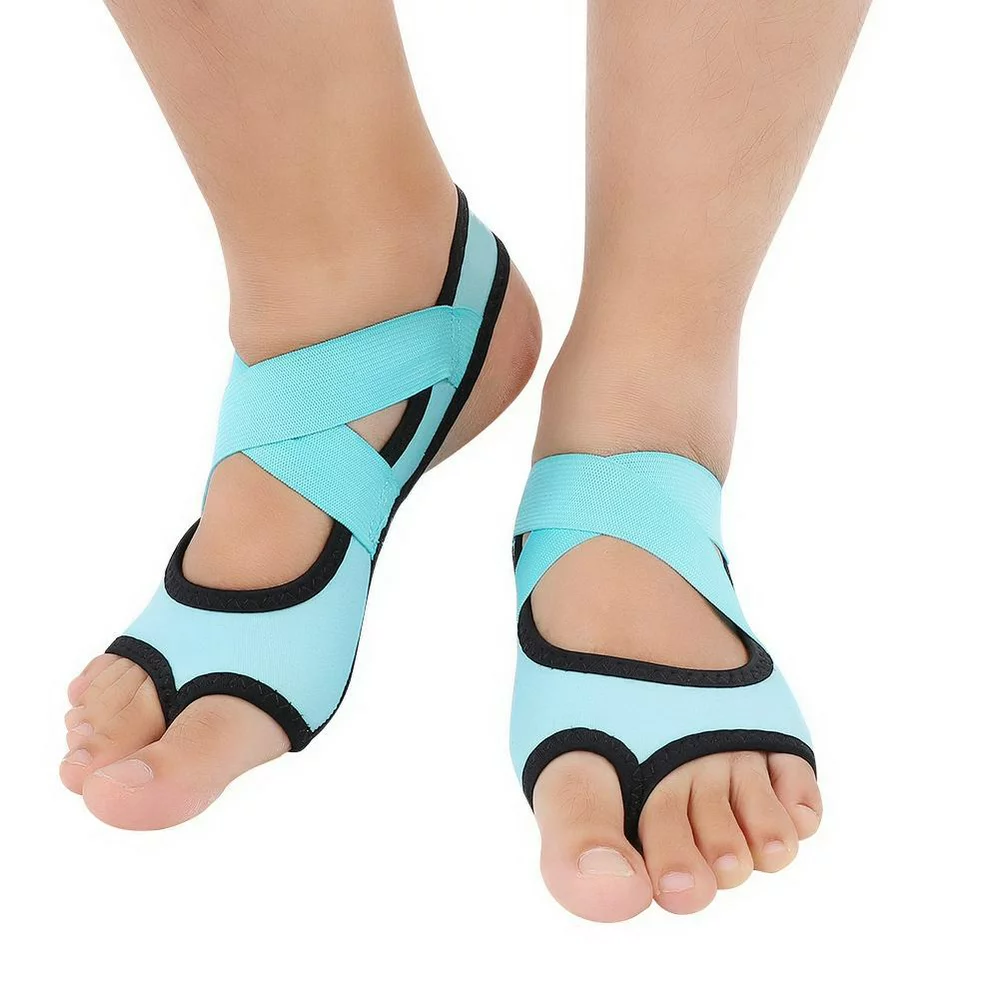I. Introduction
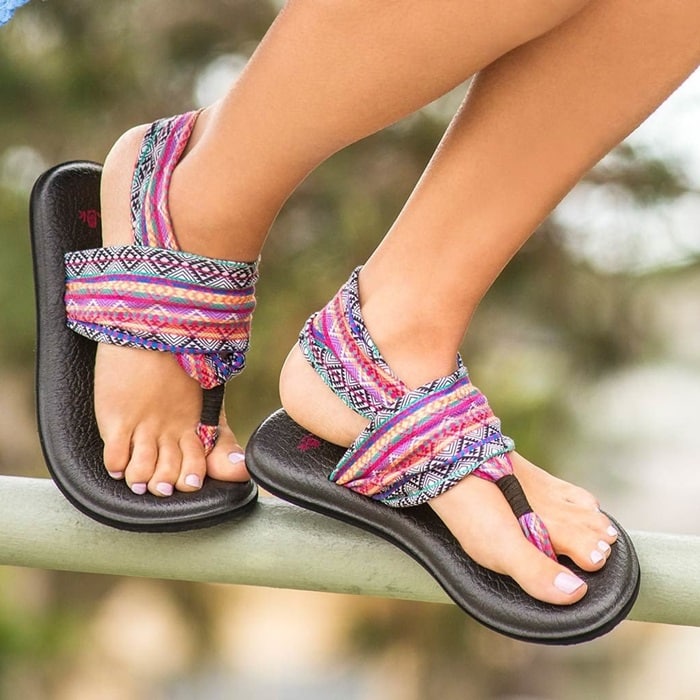
A. The growing popularity of yoga and the importance of proper footwear
In recent years, yoga has gained immense popularity as a form of exercise and a means of stress relief. Many individuals have incorporated yoga into their daily routine to improve physical fitness and mental well-being. However, practicing yoga without the proper footwear can lead to discomfort, instability, and even injury. This is where yoga shoes step in to provide the necessary support and protection.
B. Introduction to yoga shoes for women
Yoga shoes are specially designed footwear that are specifically created to meet the unique requirements of yoga practice. They provide comfort, traction, and stability, allowing yogis to fully engage in their practice without worrying about slipping or experiencing discomfort. While some may argue that practicing yoga barefoot is the best option, there are several compelling reasons why yoga shoes are becoming increasingly popular among women.
II. Understanding Yoga Shoes
A. The purpose and benefits of wearing yoga shoes
- Improved grip and traction
One of the primary purposes of yoga shoes is to enhance grip and traction during yoga practice. The soles of yoga shoes are designed with special materials, patterns, and textures that provide optimal traction on various surfaces. This prevents slipping and allows yogis to hold poses with confidence and stability.
- Enhanced stability and balance
Yoga shoes are designed to provide stability and balance, particularly during standing and balancing poses. With their supportive construction, yoga shoes help maintain proper alignment and improve overall body control. This allows yogis to focus on their practice and achieve better stability and balance.
- Protection for feet and joints
Yoga involves various movements, positions, and transitions that put pressure on the feet and joints. Yoga shoes offer a layer of protection that helps to minimize the impact and stress on these areas. The cushioning and support provided by yoga shoes reduce the risk of injury and provide comfort throughout the practice.
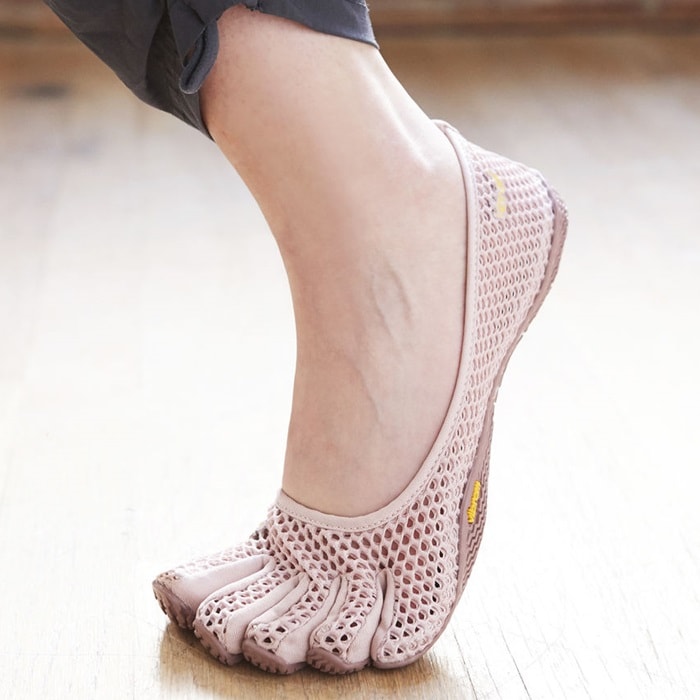
B. Different types and styles of yoga shoes
- Barefoot-style shoes
Barefoot-style yoga shoes are designed to mimic the sensation of practicing barefoot while still providing some protection and support. They are lightweight and flexible, allowing for natural movement and optimal foot articulation. These shoes typically have thin soles and minimal cushioning to create a barefoot-like experience.
- Toe-separating shoes
Toe-separating yoga shoes have individual slots for each toe, similar to toe socks. These shoes promote proper toe alignment and encourage better balance and stability. They also allow for increased flexibility and improved grip on the yoga mat.
- Slip-on shoes
Slip-on yoga shoes are convenient and easy to put on and take off. They are typically made from stretchy materials that conform to the shape of the foot. These shoes provide a snug fit and excellent grip, making them suitable for various yoga styles and floor surfaces.
- Cross-training shoes
Some women prefer to wear cross-training shoes for yoga practice. These shoes are versatile and offer stability, support, and cushioning, making them suitable for a wide range of physical activities, including yoga. Cross-training shoes typically have durable soles and ample arch support.
III. Factors to Consider When Choosing Yoga Shoes
A. Comfort and flexibility
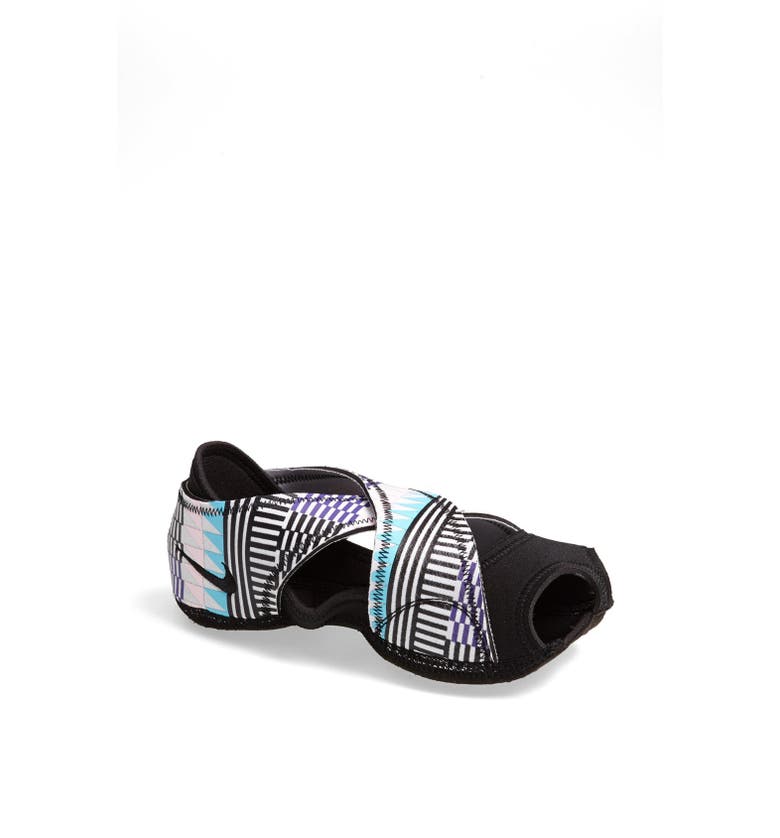
Comfort and flexibility are essential when selecting yoga shoes as they directly impact the overall experience during yoga practice. Here are some factors to consider:
- Breathable materials: Look for yoga shoes made from breathable materials like mesh or lightweight fabrics. These materials allow for proper air circulation, preventing excessive sweating and discomfort during your practice.
- Lightweight construction: Opt for yoga shoes with a lightweight construction. Heavy shoes can hinder movement and cause fatigue, so choose shoes that won’t weigh you down during your practice.
- Flexible sole and footbed: Ensure that the yoga shoes you choose have a flexible sole and footbed. This is important as it allows your feet to move naturally and maintain proper alignment and balance during poses.
B. Grip and traction
Grip and traction are crucial factors in yoga shoes as they provide stability and prevent slips and falls. Consider the following factors for optimal grip and traction:
- Non-slip outsoles: Look for yoga shoes with non-slip outsoles made from high-friction materials like rubber. These outsoles provide a secure grip on various surfaces, including yoga mats or studio floors, ensuring stability during poses.
- Texture and pattern design: Yoga shoes with textured outsoles or patterned designs offer enhanced grip and traction. These designs increase the surface area of contact with the ground, minimizing the risk of slipping during poses that require firm footing.
- Rubberized or silicone grip pads: Some yoga shoes have rubberized or silicone grip pads on the soles. These additional grip pads provide even more traction, especially during poses that require strong contact with the mat or floor.
C. Sizing and fit
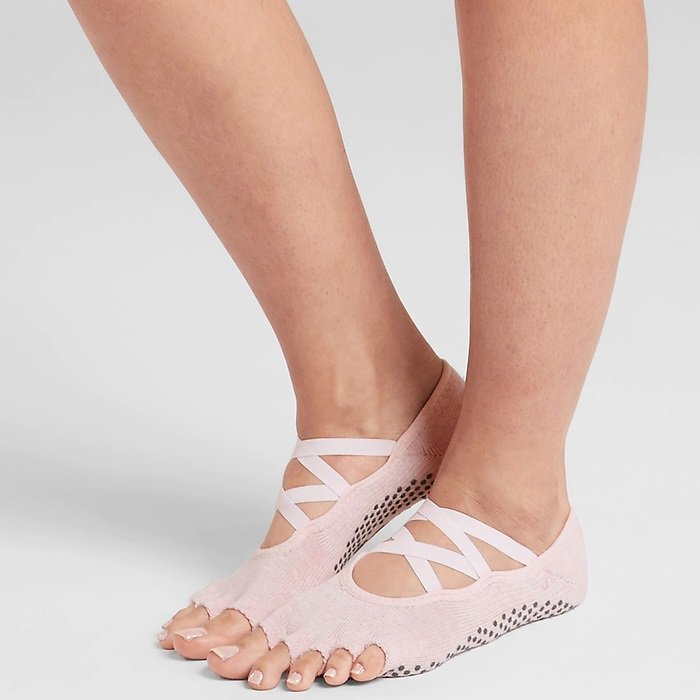
Choosing the right size and fit is crucial for comfort, support, and stability during yoga practice. Consider the following factors:
- Importance of getting the right size: Ensure that your yoga shoes are the correct size. Shoes that are too tight may restrict movement and cause discomfort, while shoes that are too loose may compromise stability and support.
- Adjustable features: Look for yoga shoes with adjustable features such as straps, laces, or elastic bands. These adjustments allow you to personalize the fit to your specific foot shape, providing additional support and stability during your practice.
- Consideration for foot shape and arch support needs: Take into account the natural shape of your feet and any specific arch support needs you may have. Some yoga shoes are designed to accommodate different foot shapes and provide varying levels of arch support, so choose accordingly.
By considering factors such as comfort, flexibility, grip, traction, sizing, and fit, you can make an informed decision when choosing yoga shoes that will enhance your practice. Remember that everyone’s preferences and needs may vary, so choose shoes that align with your specific requirements for a fulfilling and enjoyable yoga experience.
Ⅳ. Maintaining and Caring for Yoga Shoes
A. Cleaning and washing instructions
Proper cleaning and care are essential for maintaining the hygiene and longevity of your yoga shoes. Follow these cleaning instructions:
- Read the manufacturer’s instructions: Always refer to the manufacturer’s guidelines for cleaning your yoga shoes. They may have specific recommendations for cleaning methods and products to avoid damaging the materials.
- Handwashing: In most cases, handwashing is the safest method for cleaning yoga shoes. Use a mild detergent or soap and lukewarm water. Gently scrub the shoes with a soft brush or cloth to remove dirt and stains. Rinse thoroughly to remove any soap residue.
- Machine washing: Some yoga shoes may be machine washable. However, always check the manufacturer’s instructions before attempting machine washing. Use a gentle cycle and place the shoes in a protective mesh laundry bag. Avoid using harsh detergents or bleach.
- Drying: After cleaning, allow your yoga shoes to air dry naturally. Avoid direct sunlight and heat sources as they can warp or damage the materials. Stuff the shoes with newspaper or a cloth to help retain their shape and absorb excess moisture.
B. Storage recommendations
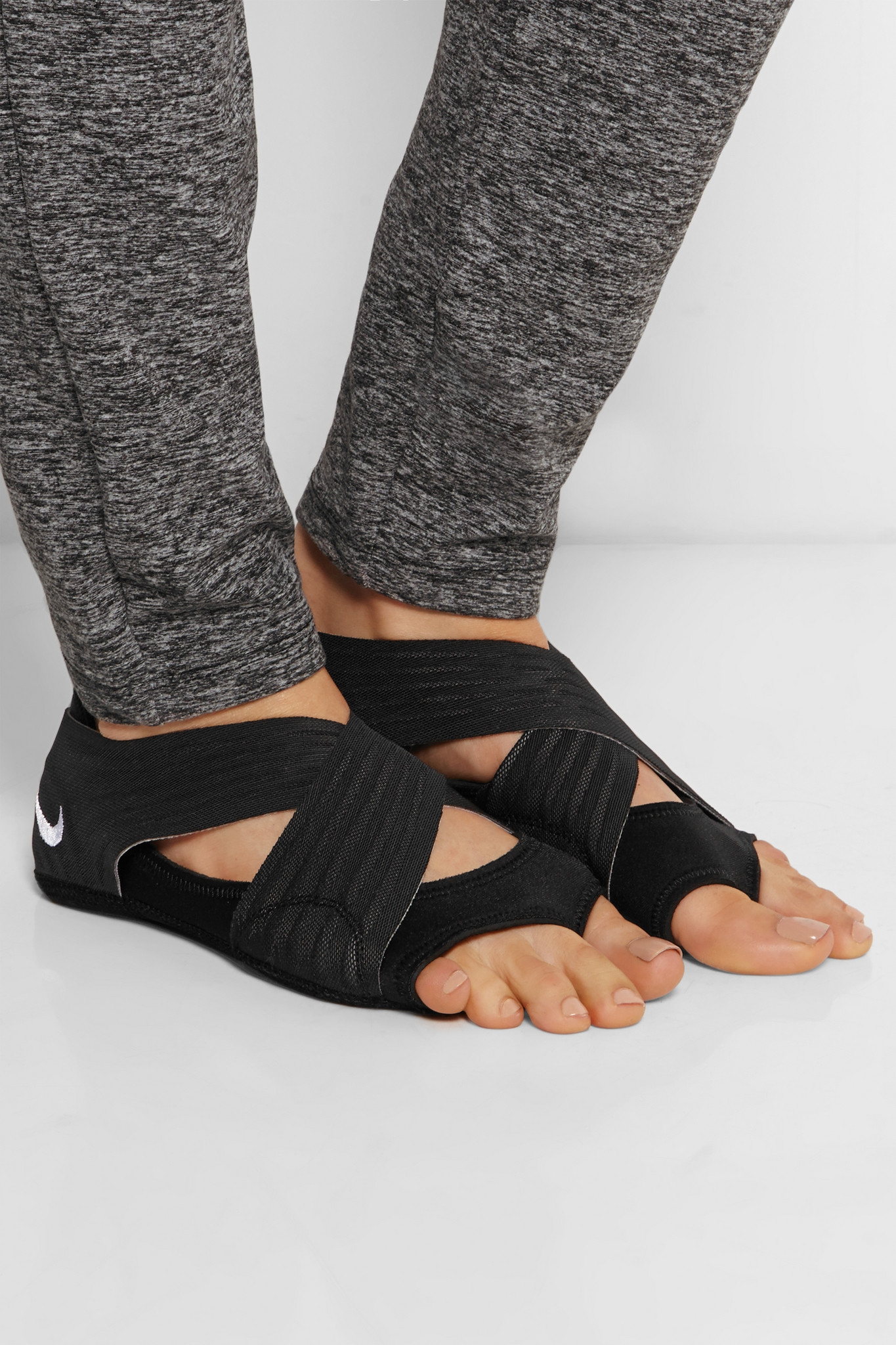
Proper storage will help to preserve the shape and quality of your yoga shoes. Follow these storage recommendations:
- Clean and dry: Before storing your yoga shoes, ensure they are completely dry and free from any dirt or moisture. Moisture can lead to mold and odors, so it’s important to thoroughly dry them after each cleaning or practice.
- Shoe bag or compartment: Consider storing your yoga shoes in a breathable shoe bag or a designated compartment in your workout bag. This will protect them from dust, moisture, and potential damage from other items.
- Proper ventilation: Store your shoes in a well-ventilated area to prevent the buildup of odors and moisture. Avoid storing them in airtight spaces or plastic bags, as this can promote the growth of bacteria or mold.
- Separate from other shoes: If storing your yoga shoes with other footwear, keep them in a separate compartment or bag to prevent any transfer of dirt or odors. Yoga shoes should be kept clean and free from outside contaminants.
C. Regular inspection and replacement guidelines
Regularly inspecting your yoga shoes is important to ensure their functionality and safety. Here are some guidelines:
- Check for wear and tear: Examine your yoga shoes periodically for signs of wear and tear. Pay attention to the soles, material, stitching, and any structural elements. If you notice significant damage or deterioration, it may be time to replace them.
- Evaluate grip and traction: Over time, the grip and traction of yoga shoes may wear down. If you feel a decline in their ability to provide sufficient grip during your practice, it could indicate that replacement is necessary for optimal safety and performance.
- Consider practice frequency: The lifespan of yoga shoes may vary depending on the frequency of your practice. If you practice yoga intensively or frequently, your shoes may wear out faster. Consider your practice habits when determining when to replace your shoes.
- Follow manufacturer’s recommendations: Manufacturers may provide guidelines on the expected lifespan of their yoga shoes. Take note of their recommendations and consult them if you have any questions about the durability or replacement requirements of your specific shoes.
By following these maintenance and care guidelines, you can extend the lifespan of your yoga shoes and ensure they remain clean, functional, and safe for your practice. Regular cleaning, proper storage, and timely replacement when necessary will contribute to a better and more enjoyable yoga experience.
